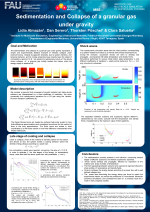The behavior of flowing granular materials displays many analogies with the classical picture of molecular gases or liquids. These analogies render natural the use of a continuum formulation, based on a set of hydrodynamic equations, to describe the dynamics of flowing granular systems. Indeed, the continuum description of granular flows often constitutes a good trade-off between computational efficiency and the accuracy provided by costly particle-based methods. However, the dissipative nature of the inter-particle interactions is the source of a host of phenomena that make such a continuum description challenging. In particular, because of the lack of strong scale separation, granular flows are typically supersonic and the corresponding continuum fields prone to develop large gradients. Numerical treatments of hydrodynamic equations for granular flows require, thus, the development of complex high-order schemes and shock capturing methods, while on the theoretical level it is often necessary to consider hydrodynamic formulations going beyond the Navier-Stokes order derived using e.g. highorder moment methods.





